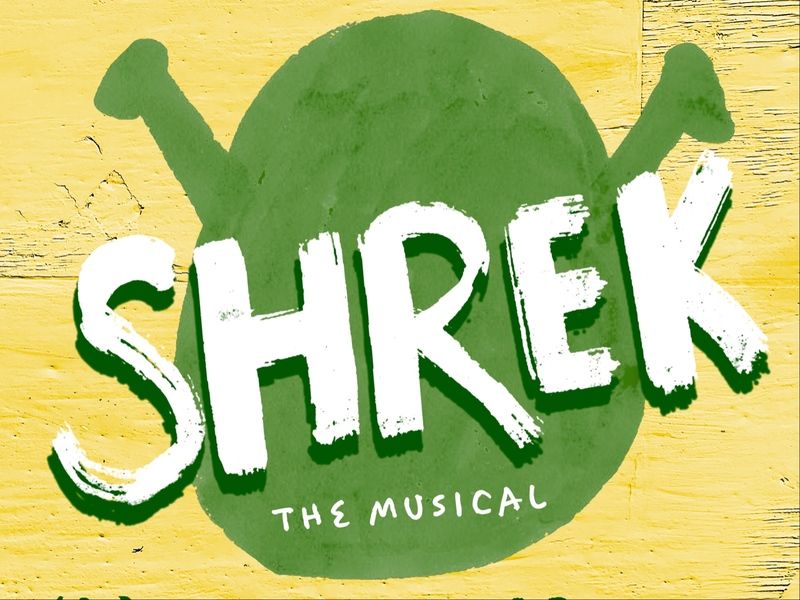"Animal Farm" is not subtle. Fittingly, the Milwaukee Rep’s version of the classic George Orwell tale, which opened last night in the Quadracci Powerhouse Theatre, is stark, pointed and brutal. But it is also beautifully conceived and performed by a tight ensemble of eight actors, who use music, stylized movement, puppets and masks to show how revolutions go wrong and how those in power will sadistically abuse it.
The evening begins with a bloody and squalid scene on the killing floor of a factory farm. Against of backdrop of grimy white tile, harshly lit by fluorescent lights, a team of exhausted and haunted animals stoop to catch their breaths between their tasks of hauling fresh beef carcasses to be processed. As a reward, they are pitted against one another to fight for bits of raw steak, which is tossed into the crowd of workers by their overseer, Farmer Jones.
Then a prophet emerges from out of the audience. An aged boar named Old Major (a commanding Stephanie Weeks) preaches to the others about a dream he had, about a glorious "golden future time" when the animals on the farm will rise up against their malicious human masters and be free. This sets the play’s cyclical and doomed struggles in motion.
Unsurprisingly, the animal characters in this story do not look like cuddly creatures from "Charlotte’s Web." Thanks to the costume design by Izumi Inaba, they are clearly human, dressed in filthy, once-white coveralls and skull caps, augmented with black work gloves, kneepads and boots. The actors carry a simple, creative rendering of their animal alter-ego, which keeps their faces clearly visible, while their species is suggested through movement and occasional vocalizations.
While this is a faithful retelling of Orwell’s thinly veiled indictment of Joseph Stalin and the aftermath of the Russian Revolution, there are echoes of other nations’ struggles in the production. As the pigs, sheep and horses initially unite to fight for their freedom, there are patriotic anthems, flag waving and rousing battles that bring the epic conflicts of "Hamilton" and "Les Miserables" to mind.
As the play progresses and the former revolutionaries are oppressed by their own leaders, there is corruption, greed, political coups and mass suffering that we have seen over and over in stories on CNN from around the world.
But perhaps most relevant for our current political moment, there is spin. Lots and lots of spin. As the porcine press secretary Squealer, Tiffany Rachelle Stewart broadcasts updates from the pigs’ administration after its leader Napoleon (a powerful and charismatic Melvin Abston) puts an end to public meetings and debate.
Through microphones and bull horns, she becomes increasingly more removed from her audience. At the same time, her messages become steadily removed from reality, promoting fake statistics of progress and fear-mongering by inventing enemies and threats from the outside.
Director May Adrales says in her program notes that, "The cruel repetition of history reminds us how tenuous and fragile human freedom is." And while that is illustrated clearly in this production, the piece sometimes feels heavy-handed. There is little insight in the onstage torture and murder of tiny stuffed animals; there is only the consistency of evil-doers stooping ever lower, breaking the fundamental promises of their own constitution and ruling by terror.
Similarly, the theme of duping the most vulnerable, the uneducated working class, is pounded home relentlessly in the final section of the 90-minute show. As the slow but strong workhorse Boxer, Stephanie Weeks repeatedly accepts her own cruel betrayal. And Clover the horse (the ever-impressive Deborah Staples) realizes much, much too late that she has devoted her life and her labor to a criminal pig dictatorship that is worse than any pre-revolution master.
Her moment of revelation, however, doesn’t carry the emotional weight it should because the audience is so far ahead of her. Instead we identify with Benjamin the donkey, played with a perfect mix of cynicism and sorrow by Jonathan Gillard Daly. He sees clearly what is happening, but feels powerless to stop it.
Kudos to the inventive lighting design, by Noele Stollmack, that projects the ominous shadow of a windmill onto the stage wall, and to the sound design, by Charles Coes and Nathan A. Roberts, that cues the animals – and the audience – to respond to a series of familiar bells, whistles and chimes. Both elements make "Animal Farm" an uncomfortable performance to watch. As it should be.







